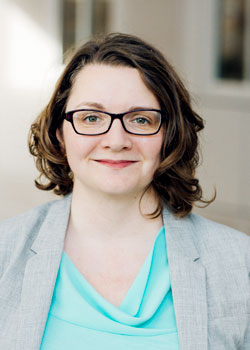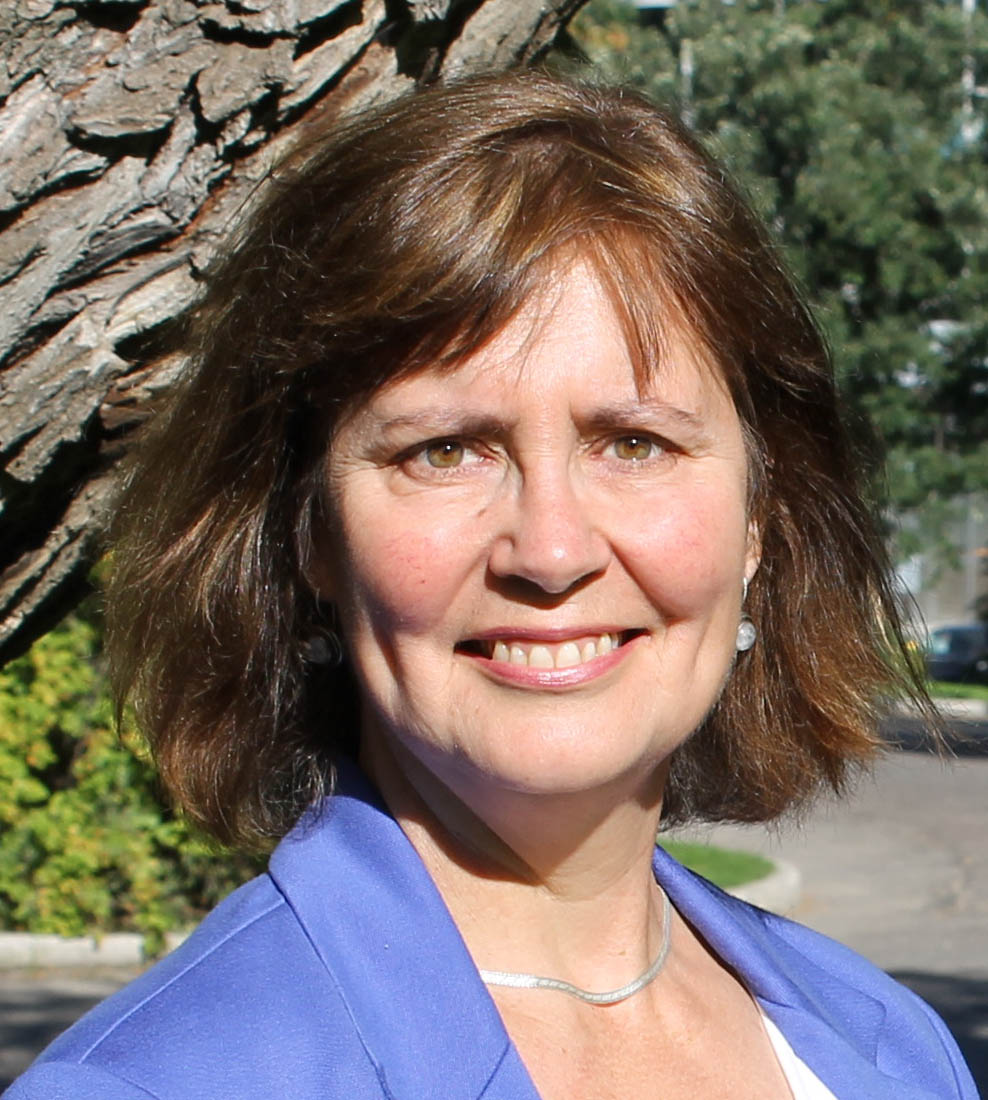
USask team shares passion for achieving sustainability goals
Just six months into her job as the first Chief Sustainability Officer at the University of Saskatchewan (USask), Janelle Hutchinson has discovered a “wonderful and shocking” number of people across campus already engaged in sustainability-related work.
By Sarath PeirisAnd she’s keen to grow that decentralized approach to deliver USask’s Sustainability Strategy with her office acting as the guide on the path to sustainability rather than as a place of top-down control.
“I really want to think and talk about (sustainability) in all areas and in all different places across campus,” Hutchinson said.

Hutchinson notes three special advisers who will help operationalize the strategy. They are Robert Bierman, director of Planning, Design and Construction, Dr. Nancy Turner (PhD), senior director of Teaching and Learning Enhancement, and Dr. Maureen Reed (PhD), distinguished professor in the School of Environment and Sustainability and UNESCO Co-Chair in Biocultural Diversity.
“This is a new structure. We’re a team coming together not officially, but very much in our shared interest and desire to move the strategy forward,” said Hutchinson.
Referring to the five commitments detailed in the strategy, Hutchinson said she is focusing on two that involve working with partners within and outside the campus—Leveraging Our Place, and Catalyzing Social Change.
“We have made progress in those areas by implementing pieces of existing memorandums of understanding (MOU) with the City of Saskatoon and the Meewasin Valley Authority (MVA),” Hutchinson said.
For instance, USask has made progress over the past year in collaborating with the city to speed up climate action, she said. As well, USask’s work with MVA and Parks Canada on the National Park initiative is advancing social change by enhancing nature conservation, connecting citizens with nature, and promoting reconciliation with Indigenous peoples.
Another way USask is working with partners is through SDG Week Canada, which runs March 6–10, 2023. The week is a national collaboration in partnership with University of British Columbia (UBC), University of Waterloo, and Colleges and Institutes Canada. The goal of the week is to raise overall awareness on campuses about the United Nations Sustainable Development Goals (SDG). Hutchinson also credits the University of Saskatchewan Students’ Union (USSU)’s Sustainability Committee for the work it is doing to mobilize the energy and passion of a new generation toward building a healthy society.
USask facilities a living laboratory
“When I joined the university as facility sustainability and engineering manager, the engineering part was something I’ve done most of my working life,” said Bierman. “What really got me excited about the role was the climate action aspects, and it’s what makes me wake up every day.”

Soon after assuming his position, Bierman began mapping out a Path to Zero plan, based on USask’s 2030 goal of cutting campus greenhouse gas emissions (GHG) by 45 per cent from 2010 levels and a long-term objective of reaching net-zero emissions by 2050. Key themes within the plan focus on reducing energy demand in existing buildings, decarbonizing the supply of heating and cooling, and building better—the notion that any new building or major renovation supports USask’s net-zero ambitions.
With 80-85 per cent of USask emissions tied to heating, cooling, ventilating, and lighting buildings, he wants to develop a clear technical path to decarbonizing campus. He has hired an external consultant to provide an assessment of USask’s current operating systems and their environmental impacts and identify technologies available to tackle emissions challenges.
Among the measures taken already to reduce the carbon footprint of buildings is a project called Optimizing Energy Efficiency, a partially federal-funded initiative. It optimized 26 buildings by connecting occupancy to energy consumption by turning off lights and reducing ventilation when empty.
“The goal was a reduction of a little bit over 4,200 tonnes of CO2-equivalent a year,” said Bierman. “The project will be delivering a bit better than that, which is a great achievement. Re-programming buildings is a low-cost way to reduce energy consumption.”
USask also received $500,000 from the provincial strategic preventive maintenance and renewal program to upgrade building controls in the Agriculture Building to provide occupancy-based ventilation, lighting, and heating. Two floors are in progress, and Bierman has applied for funding to complete the other four.
An extensive study is underway of administrative spaces across campus to “right size” the university, which has a lot of square metres that need to be heated and cooled, but few occupants. By understanding and learning the work schedules of people—for instance, if they are on campus full time or part time—perhaps a working hub can be created for those who predominantly work from home, and others brought on to campus instead of working in leased space elsewhere, Bierman said.
And along with basic capital renewal spending on such things as fixing elevators and replacing roofs, underground pipes and other technology that wear out, the question becomes finding the right replacement.
“Do you replace it with what we have now, or do you replace it with something that moves us towards the 2050 Net Zero goal?” he said.
That’s where the technical pathways study will help, he said. It’s not a step-by-step map to the future but a way to identify broad technical opportunities that need to be evaluated in the context of implications for how the campus operates.
“A big component of that study that I think we need to share broadly is that none of this comes free,” he said.
Other operating elements in the sustainability plan that pertain to operations cover everything from how grounds are maintained to aligning Marquis Culinary Centre food services’ practices with the city’s push to divert organics from the landfill, to procuring supplies that are sustainably produced.
“So, there are many layers on the operational side that push forward the notion of sustainability more broadly than just simply reducing greenhouse gas emissions,” Bierman noted.
Creating sustainability leaders
Turner, whose focus is the third strategic commitment to empower action on sustainability by supporting the development of a generation of leaders well-versed in this area, sees it as something that should include students from every USask school and colleges.

“That’s what gets me up every day—doing work that supports creating graduates who will go out and change the world,” she said. “Our goal is that eventually this will be integrated into all academic programs, so that every single program will in some way look at developing competencies for sustainability, recognizing that everyone from a nurse to an accountant to an environmental scientist can contribute to sustainability from their own professional or disciplinary perspective.”
Getting there involves being intentional about brining sustainability into the curriculum, enabling students who are selecting courses to know which are designed to help them develop sustainability competencies, she said.
As a key first step to support faculty in designing and teaching courses that provide competencies in sustainability, six faculty members have been appointed to two-year terms as sustainability faculty fellows.
“These six individuals come from different academic programs and different departments, and in this first year they are developing primarily undergraduate courses that help students advance sustainability,” said Turner.
“Then in their second year, they will build on having done this in their own context and act as champions within their college or department, working with others in their program to expand integration of sustainability across their whole program.”
Students have also had the opportunity to engage directly in co-curricular or extracurricular activities through community partnership projects, she said.
“They not only get a chance to apply the knowledge they have of sustainability and develop skills within that, but they get a chance to really make a difference to an organization,” she said.
It’s a win, win, win to the organization, to USask, and to the students, she said.
“These are high quality learning opportunities where our students can graduate with the ability to go out and advance sustainability, changing the world through their own discipline or profession.”
Bringing USask to the world, the world to USask
Reed is focusing on deepening USask’s sustainability research and enhancing the visibility of external training partnerships on the national and global stages in her role as a special adviser.

“If USask wants to become the university the world needs, that means we don’t do it in isolation. We do it in partnership with others, both at home, and across Canada and internationally,” said Reed.
Her recently established international training program, TRANSdisciplinary Education Collaboration for Transformations in Sustainability (TRANSECTS), is aimed at training and mentoring the next generation of sustainability change-makers with hubs in Canada, Germany, and South Africa and students who, so far, come from a dozen different countries.
“Students from the global north and south come together to learn professional and intercultural competencies that one needs to conduct good inter- and trans-disciplinary research and practice in sustainability with practitioners who work on the ground. We are partnered with UNESCO Biosphere Regions and Indigenous communities to learn from each other as we address sustainability challenges,” said Reed. “We are also looking at ways to bring this kind of training to post-doctoral fellows and to recommend changes to how universities assess students and faculty to support this kind of research approach.”
There are also many ways we can promote what the university is already doing well, said Reed.
“The annual People Around the World (PAW) conference organized by USask’s International Office not only links global citizens but also connects USask researchers with sustainability,” she said. “The sustainability leadership team plans to work closely with director Dr. Meghna Ramaswamy (PhD) on this platform that is a great showcase for the excellent work done at USask.
“What the sustainability leadership team is trying to do is to not take over, but to play a co-ordinating role so that we can elevate USask’s profile and also start to move towards a whole university approach towards meeting the Sustainable Development Goals,” said Reed.

